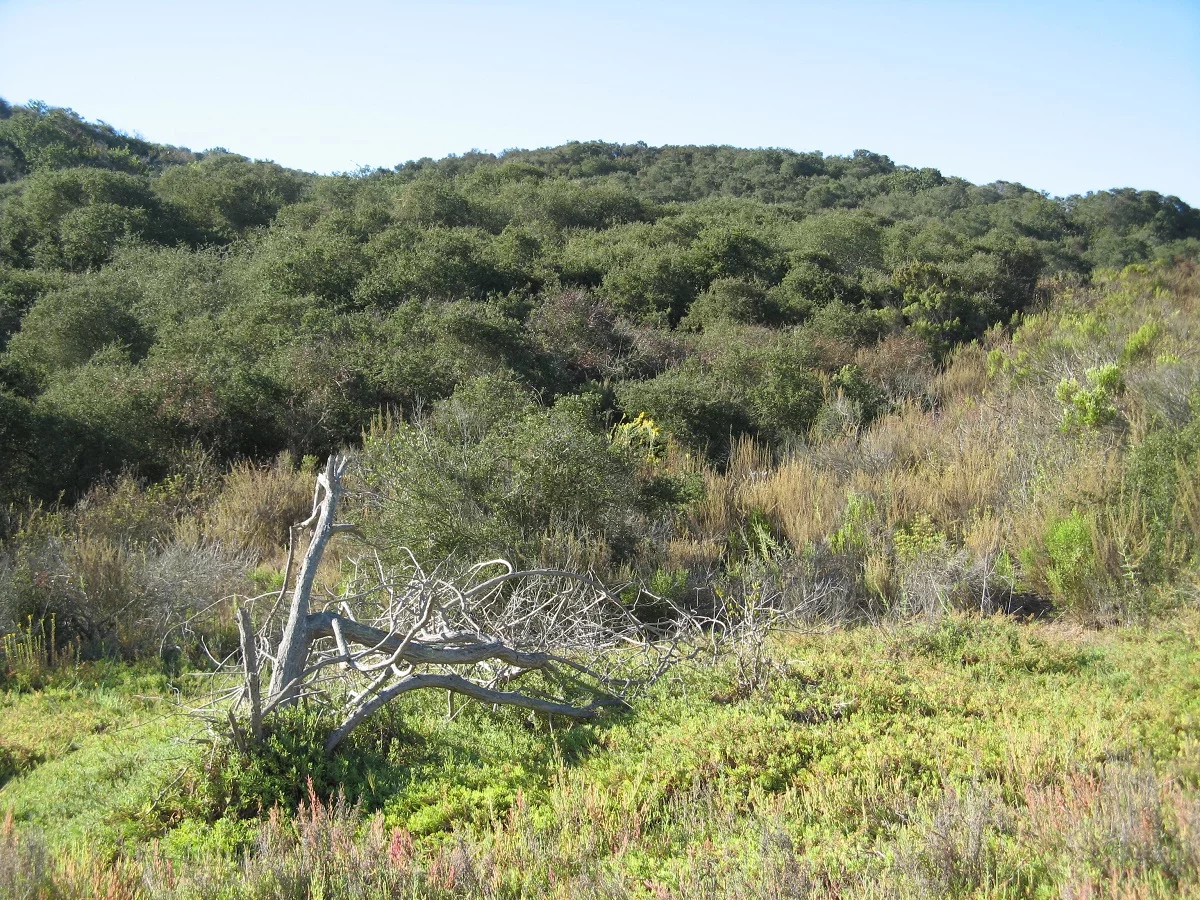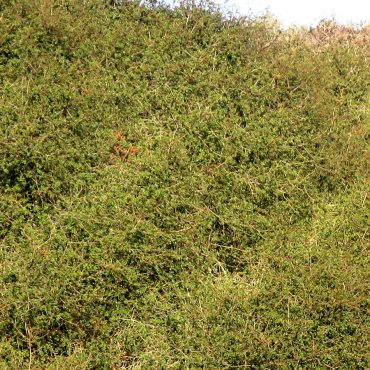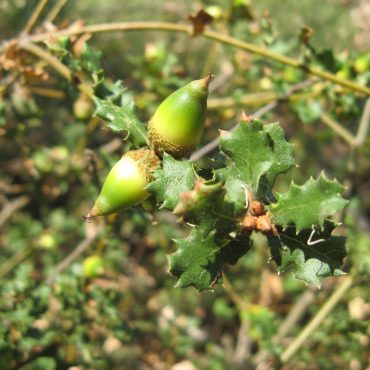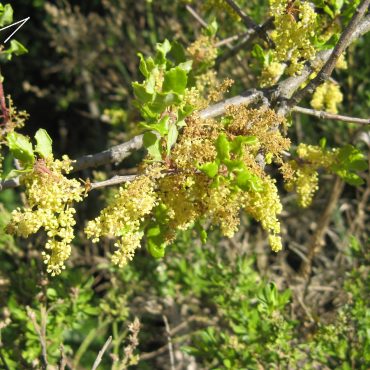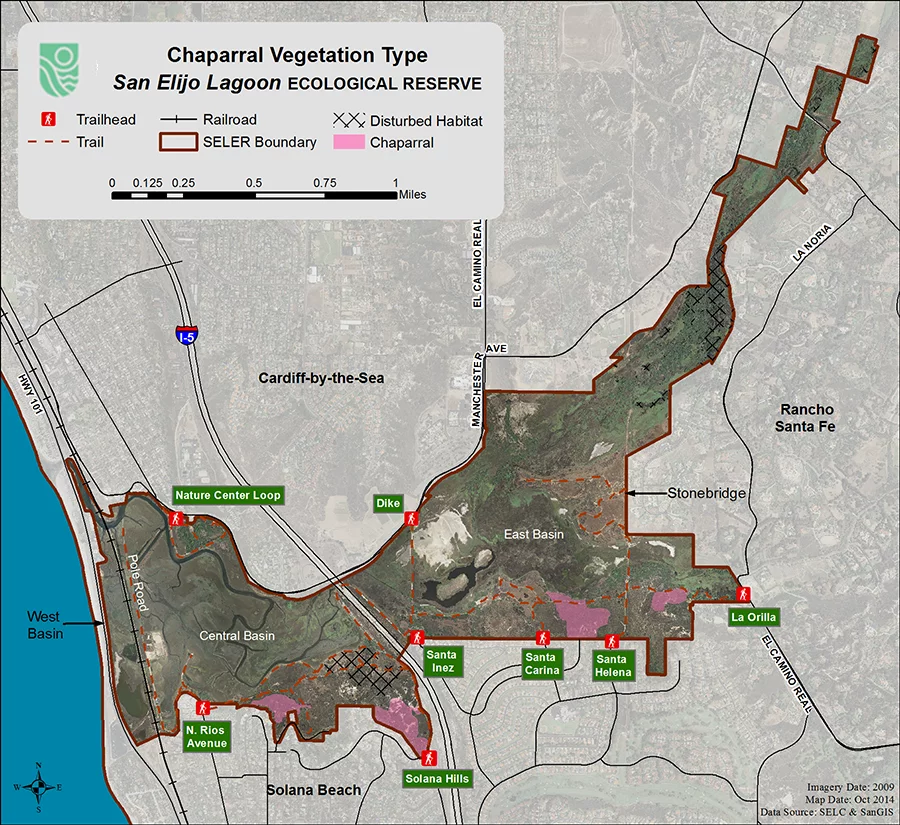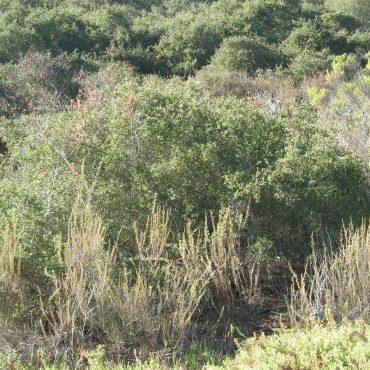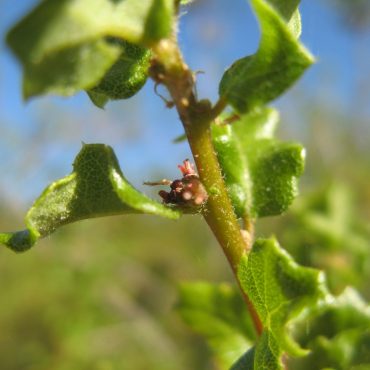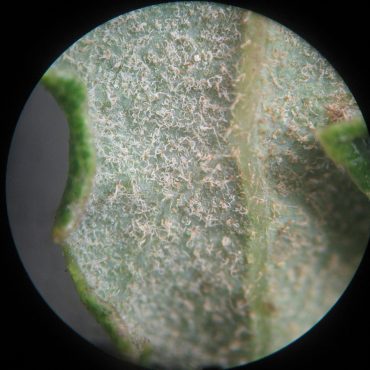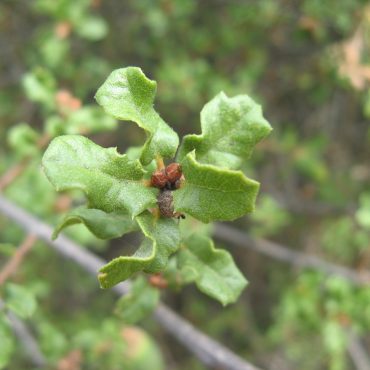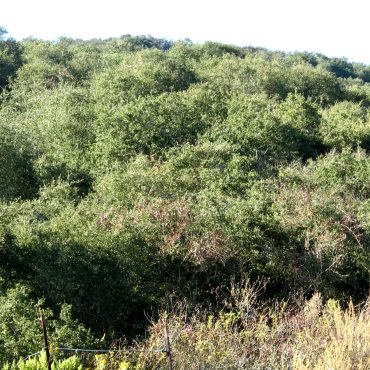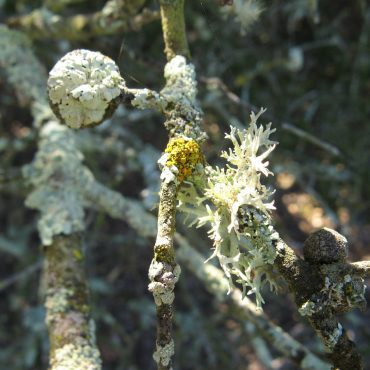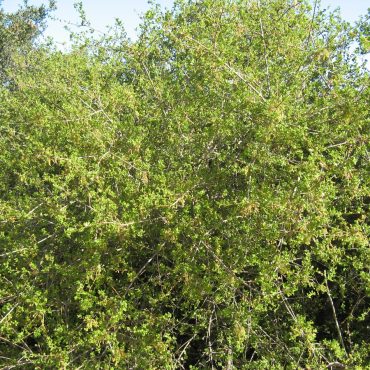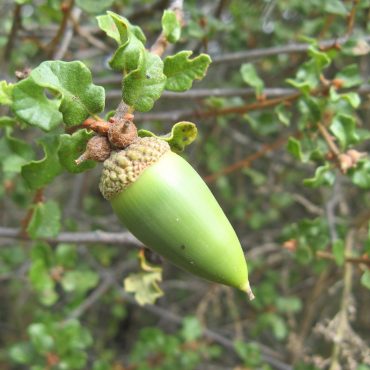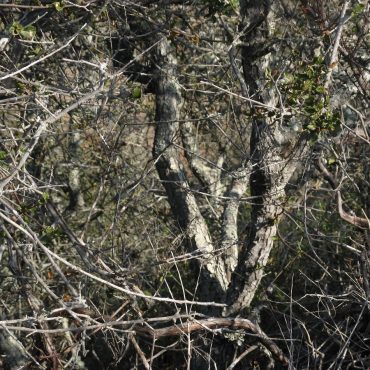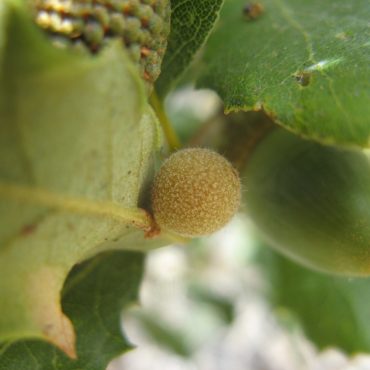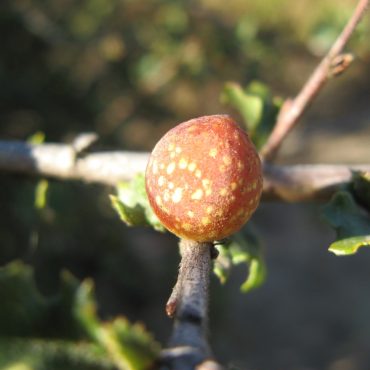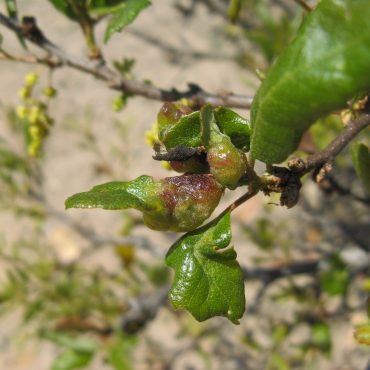Description
2,306
Nuttall’s scrub oak is a scraggly evergreen shrub, usually less than 13 feet (4 m) high, often from multiple trunks. The root system is large and deep. Twigs are short and stiff and make the shrub a scratchy, poking obstacle.
When young, leaves are apple-green, tinged with bronze; they age to dull green. They are small, oblong or elliptic, less than one inch (2.5 cm) long, often heart-shaped (cordate) at the base and with a short petiole. Leaves are stiff and leathery, often strongly undulate, sometimes cupped. Leaf margins are more or less toothed and the teeth are usually tipped with small, sharp spines. Leaf undersides are more or less covered with small, spreading curly hairs, many stellate with two to six rays.
The small flowers of scrub oak are unisexual with male and female flowers separated but on the same plant. Both lack petals and the calyx is inconspicuous. The male flowers are born on several short, slender catkins that hang in clusters at and near the base of young (spring) shoots. Each male flower has a few stamens. Female flowers are inconspicuous and difficult to find. They occur in small clusters in leaf axils along the outer portion of spring twigs, several nodes distant from the male catkins. Each female flower has one pistil with an inferior, one-chambered ovary about 1.5 mm long, and two to four styles each with a dark, button-like stigma. Nuttall’s scrub oak blooms March into May.1
Acorns are solitary or paired; they mature in one year. They are narrow, oblong nuts, usually less than 3/4 inch (2 cm) long, with a cup at one end and a small point at the other. The pointed end of the acorn often retains the dried styles. The acorn cup is a woody structure that develops from the involucre; it is covered with several rows of scale-like bracts that become wart-shaped as the nut matures. (The final appearance has been described as quilted.27) The inside of the cup is smooth, without hairs. The cup may remain on the branch after the nut has been shed.

